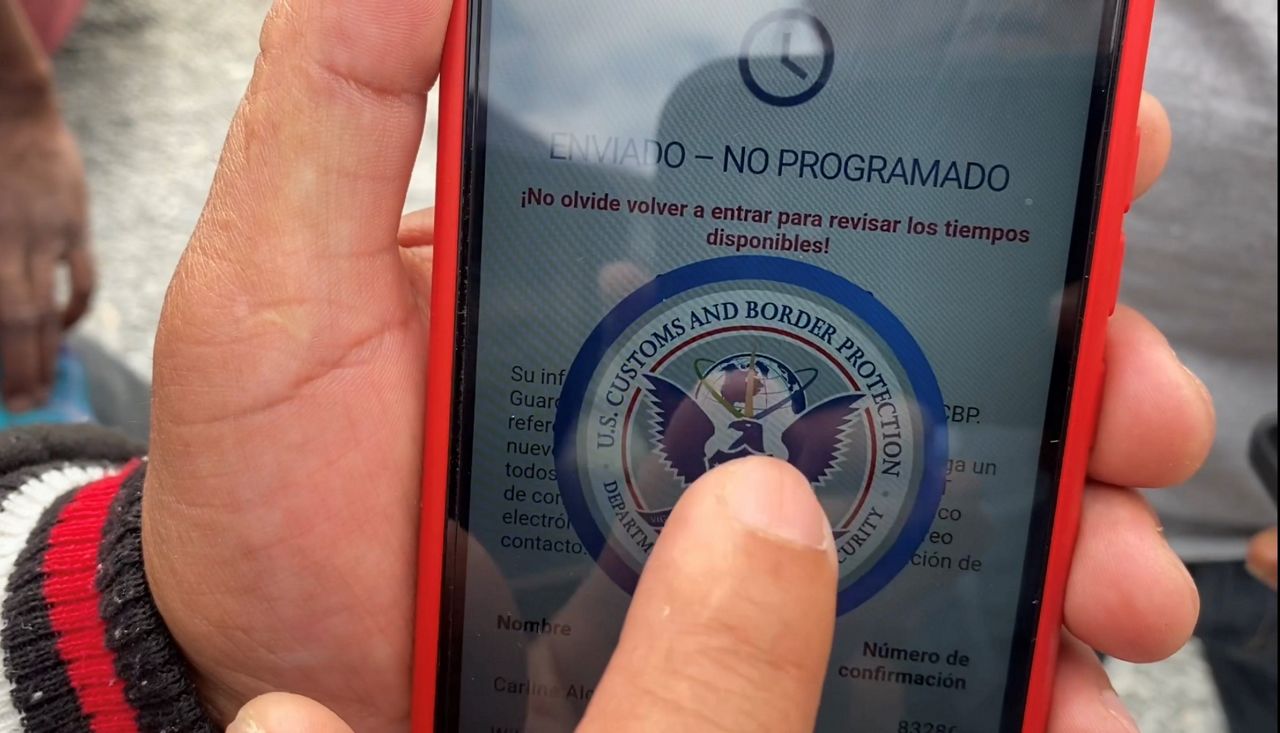TEXAS — Asylum seeker Scarlett Hernandez saw Brownsville for the first time on Friday, July 21, after she was accepted into the U.S..
What You Need To Know
- The CBP One app grants migrants asylum, but requires them to be near the border, advocates say
- For the humanitarian organizations at the border, this geolocation feature is deeply troubling
- It was initially proposed by the Biden administration that people could use the app to apply for asylum from their home countries before traveling to the U.S.-Mexico border
- In May, the Department of Homeland Security announced the app would prioritize asylum seekers who had been at the border for longer periods of time
She traveled from Venezuela to Matamoros and was admitted to the U.S. through the CBP One app. After picking up a call from her anxious mother, visibly happy, Hernandez spoke about what the experience of traveling to the border was like for her.
“On the one hand, it was hard because we are migrants coming through an unknown country, but thanks to the app we are here making our dream come true, which is hard to achieve in our country,” said Hernandez.
For migrants, the only way to request asylum is through the CBP One app. Scarlett found out that the long trip to the border was absolutely necessary to even try.

“It works with our actual location through our GPS. It starts working from Mexico City up to the border towns,” said Hernandez.
But for the humanitarian organizations at the border, this geolocation feature is deeply troubling.
The CBP One app is now the direct cause of the ongoing humanitarian crisis, according to Gladys Cañas with Helping Them Succeed in Matamoros, Mexico. She said the app makes migrants move closer to the border before they can even use it.
“Obviously for them, it’s the risk of coming all the way here. People who are in the south like in Tapachula, they are not going to be able to use it. That’s not how it works.” Said Canas.
We asked Hernandez what happens if people try to use the app from far from the border or in her native country, Venezuela.
“Error. Your location is not apt for the app to work. You get an error message,” she replied.
This contradicts what the Biden administration said the app would do when it was launched as a solution to the large influx of migrants at the border. It was proposed that people could apply even from their home countries before traveling to the U.S.-Mexico border. But that’s not the case.
And there’s another big problem, Canas pointed out. Being at the border doesn’t guarantee an appointment, and there are not enough of them for the number of migrants who keep coming. Many wait for as long as nine months.
“This creates confusion and desperation among the migrants because they think they have priority for having arrived first and they have been insisting for a long time,” said Canas.
In fact, in May, DHS announced the app would now prioritize asylum seekers who had been at the border for longer periods of time.
But Hernandez is an example of how unpredictable this can be. She only had to wait for three days for an appointment, while others never even get it. As a result, many grow desperate and prefer to crossing the border illegally.
We requested a comment from Customs and Border Protection on this feature and its purpose, but we never got a response.



